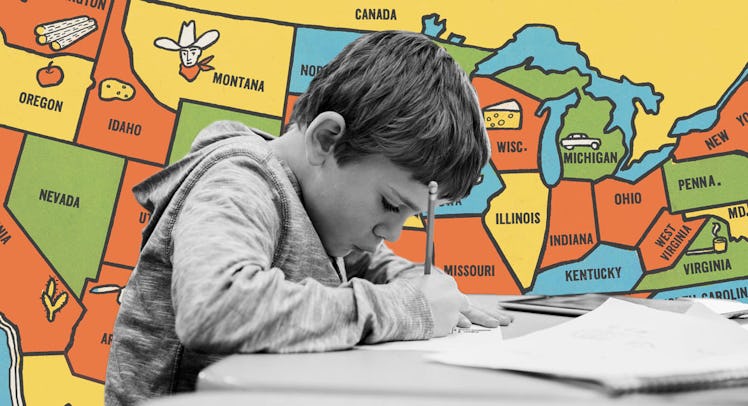Learning Styles Aren’t Real, But We Teach To Them Anyway
Think your child is a visual, kinesthetic, or auditory learner? You're wrong.

The idea that certain children learn better visually while others learn more effectively kinesthetically has clear appeal. It explains why some kids thrive in certain academic settings, providing a convenient excuse for poor performance as well as a way to couch failure in intellectual individuality. Unfortunately, it’s nonsense. Scientists have more or less formed a consensus on the idea of learning styles, which they have labeled one of neuroscience’s most pervasive myths. What is harder to explain is why, despite ample evidence to the contrary, parents and educators continue to believe catering to a certain style will help kids learn.
Maybe someone needs to draw them a picture.
“The learning style myth has been around for decades. We aren’t too sure why it caught on in such a broad way,” says psychologist Shaylene Nancekivell, who suspects that part of the appeal of the fallacy is that people are comfortable categorizing others into groups (and largely ignorant about neurology). Believing in learning styles allows for a comfortable sort of siloing. And it all makes sense if you don’t actually understand what working memory is or how it, well, works.
“Working memory is the tool in your mind that allows you to hold information in use, say, while you are completing a task,” Nancekivell explains. “Learning styles are a myth that suggests that people have a dominant way of learning information that maps onto visual, auditory, or kinesthetic domains.”
Study after study has demonstrated that this is not true and that self-reported learning styles do not help people process or retain information. Still, some 80 to 95 percent of adults polled believe in them, educators included. This represents a real problem. Research shows that when teachers believe in learning styles they divert disproportionate time and energy to framing lessons around them. This leads children to internalize the idea that there are different ways to learn and to start studying in ineffective ways. Teacher certification programs that incorporate learning styles have made the myth even more difficult to dispel by persistently peddling bad science to an audience with good intentions.
Very little work has examined why smart parents who want what’s best for their kids continue to believe in learning styles, but Nancekivell has conducted two separate studies on people’s learning style views. The first experiment surveyed 393 adults on if they thought people were born with learning styles, if these could change, if they were genetic, and if they predicted career choice or even success. A second survey found that of 383 adults replicated the first, but added a section where participants had to read vignettes about children who were switched at birth from parents with one learning style to parents with another learning style. Participants were asked to predict these children’s learning styles.
“Overall, we found that educators were slightly less likely than the general public to believe in the myth. However, they were still highly likely to — around 90 percent,” Nancekivell says.
Other results indicated that a majority of participants agreed: People are born with one of two predominant learning styles (visual or kinesthetic); different learning styles used different parts of the brain to learn; these styles are detectable in early childhood; and they predict educational outcomes — none of which, again, is true. However, most people thought that learning styles were not fixed, could be shaped by experience, and were not mutually exclusive. Views on learning styles were not as extreme as Nancekivell thought they might be, but she remains concerned that parents and educators are still wasting time and money tailoring programs to accommodate a phenomenon that isn’t real.
Nancekivell hopes her current research and future studies will help parents and teachers focus on resources that actually help kids learn. For as much research that shows learning styles are a not a thing, there are just as many studies that showing that presenting information in multiple ways and teaching with a variety of approaches does help young learners.
“There is nothing wrong with parents encouraging children’s strengths,” Nancekivell says. “But learning styles don’t exist, so they can’t be a strength.”
This article was originally published on